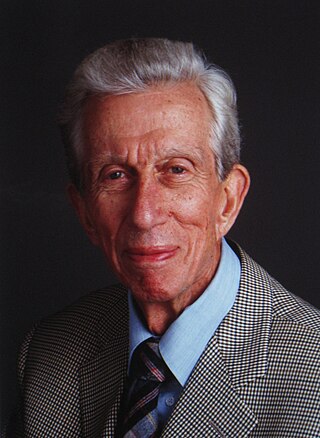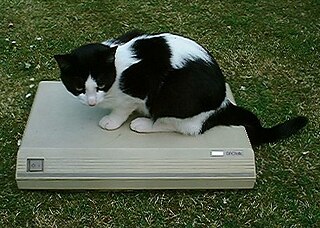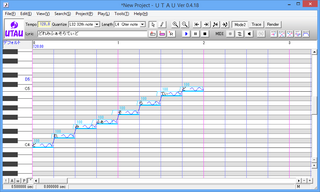
The International Phonetic Alphabet (IPA) is an alphabetic system of phonetic notation based primarily on the Latin script. It was devised by the International Phonetic Association in the late 19th century as a standardized representation of speech sounds in written form. The IPA is used by lexicographers, foreign language students and teachers, linguists, speech–language pathologists, singers, actors, constructed language creators, and translators.
Liquids are a class of consonants that consists of rhotics and voiced lateral approximants, sometimes described as "r-like sounds" and "l-like sounds". The word liquid seems to be a calque of the Ancient Greek word ὑγρός, initially used by grammarian Dionysius Thrax to describe Greek sonorants.
A vowel is a syllabic speech sound pronounced without any stricture in the vocal tract. Vowels are one of the two principal classes of speech sounds, the other being the consonant. Vowels vary in quality, in loudness and also in quantity (length). They are usually voiced and are closely involved in prosodic variation such as tone, intonation and stress.
Speech synthesis is the artificial production of human speech. A computer system used for this purpose is called a speech synthesizer, and can be implemented in software or hardware products. A text-to-speech (TTS) system converts normal language text into speech; other systems render symbolic linguistic representations like phonetic transcriptions into speech. The reverse process is speech recognition.
Linguistics is the scientific study of human language. Someone who engages in this study is called a linguist. See also the Outline of linguistics, the List of phonetics topics, the List of linguists, and the List of cognitive science topics. Articles related to linguistics include:
Non-native pronunciations of English result from the common linguistic phenomenon in which non-native speakers of any language tend to transfer the intonation, phonological processes and pronunciation rules of their first language into their English speech. They may also create innovative pronunciations not found in the speaker's native language.
PlainTalk is the collective name for several speech synthesis (MacinTalk) and speech recognition technologies developed by Apple Inc. In 1990, Apple invested a lot of work and money in speech recognition technology, hiring many researchers in the field. The result was "PlainTalk", released with the AV models in the Macintosh Quadra series from 1993. It was made a standard system component in System 7.1.2, and has since been shipped on all PowerPC and some 68k Macintoshes.

Carl Gunnar Michael Fant was a leading researcher in speech science in general and speech synthesis in particular who spent most of his career as a professor at the Swedish Royal Institute of Technology (KTH) in Stockholm. He was a first cousin of the actors and directors George Fant and Kenne Fant.
The phonology of Vietnamese features 19 consonant phonemes, with 5 additional consonant phonemes used in Vietnamese's Southern dialect, and 4 exclusive to the Northern dialect. Vietnamese also has 14 vowel nuclei, and 6 tones that are integral to the interpretation of the language. Older interpretations of Vietnamese tones differentiated between "sharp" and "heavy" entering and departing tones. This article is a technical description of the sound system of the Vietnamese language, including phonetics and phonology. Two main varieties of Vietnamese, Hanoi and Saigon, which are slightly different to each other, are described below.
Speech Synthesis Markup Language (SSML) is an XML-based markup language for speech synthesis applications. It is a recommendation of the W3C's Voice Browser Working Group. SSML is often embedded in VoiceXML scripts to drive interactive telephony systems. However, it also may be used alone, such as for creating audio books. For desktop applications, other markup languages are popular, including Apple's embedded speech commands, and Microsoft's SAPI Text to speech (TTS) markup, also an XML language. It is also used to produce sounds via Azure Cognitive Services' Text to Speech API or when writing third-party skills for Google Assistant or Amazon Alexa.
Speech perception is the process by which the sounds of language are heard, interpreted, and understood. The study of speech perception is closely linked to the fields of phonology and phonetics in linguistics and cognitive psychology and perception in psychology. Research in speech perception seeks to understand how human listeners recognize speech sounds and use this information to understand spoken language. Speech perception research has applications in building computer systems that can recognize speech, in improving speech recognition for hearing- and language-impaired listeners, and in foreign-language teaching.

DECtalk was a speech synthesizer and text-to-speech technology developed by Digital Equipment Corporation in 1983, based largely on the work of Dennis Klatt at MIT, whose source-filter algorithm was variously known as KlattTalk or MITalk.
Chinese speech synthesis is the application of speech synthesis to the Chinese language. It poses additional difficulties due to Chinese characters frequently having different pronunciations in different contexts and the complex prosody, which is essential to convey the meaning of words, and sometimes the difficulty in obtaining agreement among native speakers concerning what the correct pronunciation is of certain phonemes.
MBROLA is speech synthesis software as a worldwide collaborative project. The MBROLA project web page provides diphone databases for many spoken languages.
The Java Speech API (JSAPI) is an application programming interface for cross-platform support of command and control recognizers, dictation systems, and speech synthesizers. Although JSAPI defines an interface only, there are several implementations created by third parties, for example FreeTTS.
The CMU Pronouncing Dictionary is an open-source pronouncing dictionary originally created by the Speech Group at Carnegie Mellon University (CMU) for use in speech recognition research.

UTAU is a Japanese singing synthesizer application created by Ameya/Ayame (飴屋/菖蒲). This program is similar to the VOCALOID software, with the difference being it is shareware instead of under a third party licensing.

Cantor was a vocal singing synthesizer software released four months after the original release of Vocaloid by the company VirSyn, and was based on the same idea of synthesizing the human voice. VirSyn released English and German versions of this software. Cantor 2 boasted a variety of voices from near-realistic sounding ones to highly expressive vocals and robotic voices.

Speech Recognition & Synthesis, formerly known as Speech Services, is a screen reader application developed by Google for its Android operating system. It powers applications to read aloud (speak) the text on the screen, with support for many languages. Text-to-Speech may be used by apps such as Google Play Books for reading books aloud, Google Translate for reading aloud translations for the pronunciation of words, Google TalkBack, and other spoken feedback accessibility-based applications, as well as by third-party apps. Users must install voice data for each language.

Dennis H. Klatt was an American researcher in speech and hearing science. Klatt was the pioneer of computerized speech synthesis and created an interface which allowed for speech for non-expert users for the first time. Prior to his work, non-verbal individuals would need specialist support to be able to speak at all. Stephen Hawking used a version of this speech synthesizer, based on Klatt's own voice, and which Hawking chose to keep even after others became available.







